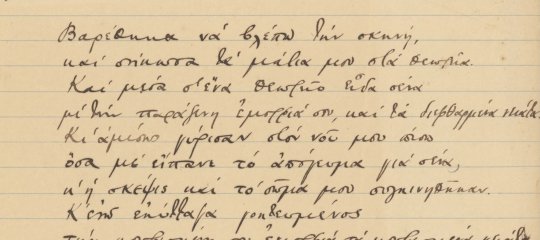Προβολή της ελληνικής γλώσσας στην Alliance Française, Ουάσινγτον
της Θεοδώρας Καμαρούδη
Το Γραφείο Εκπαίδευσης της Ελληνικής πρεσβείας στην Ουάσινγκτον μετά από πρόσκληση της Γαλλικής Ένωσης (Alliance Française) παρουσίασε την ελληνική γλώσσα στα πλαίσια μιας διοργάνωσης για την προβολή ευρωπαϊκών γλωσσών του ινστιτούτου Eunic (European Union National Institutes of Culture) στις 17 Φεβρουαρίου 2012. Στόχος των διοργανωτών ήταν να δώσουν στο κοινό την ευκαιρία να ανακαλύψει τον πλούτο των γλωσσών στην Ευρώπη.
Η εκδήλωση άρχισε με μια γενική εισαγωγή στις 23 διαφορετικές γλώσσες της Ευρώπης και το κοινό ευρωπαϊκό πλαίσιο αναφοράς της πιστοποίησής τους. Στη συνέχεια το κοινό επέλεξε να γνωρίσει από κοντά δύο από αυτές τις γλώσσες. Στην αρχή της παρουσίασης των ελληνικών, ο Σύμβουλος Εκπαίδευσης στην Ουάσινγκτον Δρ. Αντώνιος Μαρμαρινός μίλησε για τα πολλαπλά οφέλη της δίγλωσσης εκπαίδευσης στα αγγλικά και ελληνικά. Η Δρ. Θεοδώρα Καμαρούδη, αποσπασμένη φιλόλογος στο πανεπιστήμιο Georgetown, μίλησε για την μεγάλη ιστορία της ελληνικής γλώσσας και ανέδειξε την διαχρονικότητά της.
Με διαδραστικές δραστηριότητες το κοινό κλήθηκε να αναγνωρίσει τους ήχους της ελληνικής γλώσσας, να μάθει το αλφάβητό της και να συνειδητοποιήσει το τεράστιο ποσοστό ελληνικών λέξεων που έχουν εισαχθεί στην αγγλική γλώσσα. Η παρουσίαση της ελληνικής γλώσσας, που έγινε δύο φορές για δύο διαφορετικές ομάδες ακροατών-μαθητών, έκλεισε με αναφορές του Συντονιστή Εκπαίδευσης για το πού μπορεί κανείς να μάθει ελληνικά στην ευρύτερη περιοχή της Ουάσιγκτον και πώς μπορεί να πιστοποιήσει την γνώση τους (Κέντρο Ελληνικής Γλώσσας, ελληνομάθεια). Η ανταπόκριση του κοινού στην πρώτη αυτή «εμπειρία ελληνικών» με βίντεο, μουσική και διαφάνειες ήταν ιδιαίτερα θερμή.










